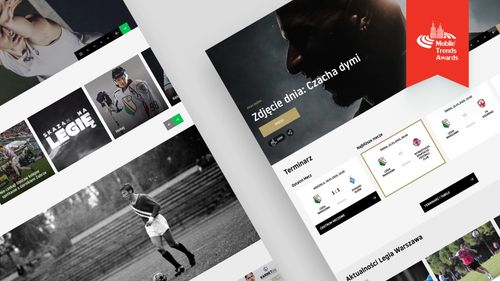Artificial Intelligence in Business Intelligence and Analytics – Perspectives From a Business Analyst

Filip Niedziela

Did you know that 65% of tasks can be made more productive with ChatGPT? And did you know that I found this statistical data with a corresponding source in a blink of an eye, using Artificial Intelligence? I'm Filip Niedziela, a Business Analyst at hero/dot, and I'm here to share my perspective on how AI can enhance our daily work.
This article is part of the Decoding AI series by hero/dot, which focuses on showcasing the practical aspects of Artificial Intelligence and its impact on the future of business and IT. Decoding AI stems from our commitment to keeping up with the latest technological advancements. In monthly internal workshops, our team members share their experiences with different aspects of using AI in their daily work. We then condense that knowledge into helpful articles to share with you on our blog.
Today, we give the floor to our skilled business analyst and up-and-coming project manager, Filip Niedziela. In this article, Filip will discuss:
- His perspectives on using AI in business analysis tasks.
- An overview of common risks associated with AI tools and strategies to mitigate them.
- 5 helpful prompting techniques for maximizing the potential of ChatGPT.
- 3 detailed cases illustrating AI usage in business analysis.
- A 'cheat sheet' of his proven prompts.
Take it away, Filip!
Artificial Intelligence: Exploring Risks and Opportunities
Note: If you're looking for a more comprehensive introduction to the topic of Artificial Intelligence, be sure to check out this article on our blog.
Artificial intelligence, or AI, is a broad term that encompasses various technologies and machine learning algorithms designed to process and analyze data, identify patterns, and facilitate decision-making. One familiar example is ChatGPT, a language model focused on generating text (i.e. natural language processing) based on context and extensive sets of training data.
Despite rising concerns, I personally believe that no AI can replace human creativity. While AI excels in tasks like text generation, content creation, analyzing data, and process automation, excessive reliance on it without human judgment and contextual understanding can hinder innovative thinking and lower the quality of our work. Moreover, there are several risks associated with AI in the workplace, three of which I'll discuss here.
Hallucinations
Hallucinations occur when AI generates inaccurate outputs by filling knowledge gaps with incorrect information. For example, if a model is trained on images of forests and then gets an image with a partially obscured tree in the foreground, it may try to fill in the missing part based on what it saw before. As a result, the replacement may be inaccurate or even give the impression that certain elements do not match the rest of the image, which would be considered a hallucination.

Outdated Information
Language models like ChatGPT rely, to some extent, on outdated and sometimes inaccurate data since they haven't been updated beyond 2021 and often lack internet access. Thus, we need to be extremely careful when asking about recent events, market trends or predictions, as AI answers may yield outdated information or even hallucinations. If the training data does not include changes in social norms or values, the model may generate content that is against current social beliefs.
Lack of Contextual Understanding
AI models may struggle with interpreting words and phrases contextually. Take the word "agile," for example. While AI understands its dictionary definition and general context in software development, it lacks awareness of how you decide to use those words and concepts in your conversation. This can result in exchanges of words that lack contextual understanding, especially when context changes during a conversation due to memory limitations.
The bottom line is, in using AI tools like ChatGPT, asking clear questions, specifying the context, and looking out for potential inaccuracies are absolutely crucial. Now, instead of solely dwelling on threats, let's focus on opportunities this technology offers.
Prompt Engineering
Prompt engineering revolves around crafting effective queries for a given language model. Simply put: the better the prompt, the better the response. In this segment, I'll share some of my most reliable prompting techniques that consistently yield excellent results.
Persona Acting
Prompt: Act as Persona X.
Example: Act as an IT specialist, I will tell you about my programming practices, and you will evaluate my technology choices, highlighting key features and suggesting more efficient solutions.
Explanation: Persona acting is a useful technique I employ regularly as a business analyst. By instructing ChatGPT to adopt the perspective of a professional in a specific field, I gain insights into my work from a different angle. This helps me broaden my perspective, validate assumptions, and make adjustments based on compelling arguments.
Assume Audience
Prompt: Assume that I am Persona Y.
Example: Imagine I'm a 10-year-old computer game enthusiast with limited tech knowledge. Explain what powerful language models are and how Chatbots work, using examples from games or computer interactions.
Explanation: Assume Audience is a complementary prompt to Persona Acting. Taking the audience into account allows for a tailored explanation of complex concepts. By assuming a specific recipient, we guide ChatGPT to use understandable language and relevant examples, ensuring clarity and engagement.
Question Refinement
Prompt: Provide a better version of the question.
Example: From now on, every time I ask a question, suggest a better version of the question to use instead.
Explanation: Refining questions is an underrated yet valuable prompt. Crafting the right query is half the battle, whether in sales, analysis, or everyday conversation. By requesting improved versions of our questions, we ensure clarity and conciseness in communication, leading to mutual understanding and higher-quality outcomes.
Flipped Interaction
Prompt: Ask me questions.
Example #1: I am designing an online booking system. I would like you to ask me questions to achieve a ready IT roadmap for a large product. You should keep asking questions until we reach that goal.
Example #2: Ask questions to help me diagnose the problem. Ask questions until you have enough information to identify the two most likely causes. Ask one question at a time.
Explanation: This prompt shifts the interaction dynamic, with ChatGPT guiding us towards our goals through strategic questioning instead of spitting out standard content. In the first example, ChatGPT responded by inquiring about various crucial aspects: the project's purpose, system functionalities, security measures, integration, desired UI design, some of which might easily slip my mind. Addressing these inquiries provided me with a deeper insight into the project and allowed me to more precisely define the project trajectory.
Enforced Continuation
Prompt: Inquire about continuing the response.
Example: I realize that you will not be able to include everything in the form of one answer. For this reason, always ask if you should continue and I will confirm with a "Yes" command for you to continue the study.
Explanation: The truth is, ChatGPT has its limitations; eventually, it reaches a point where it ceases to generate responses and declines to provide further information. Moreover, if prompted for additional content, it often loses track of context, veering off topic or even repeating itself. Therefore, by using this prompt, we can instigate continuation, guiding the model to further develop the discussion and address all relevant points.

Artificial Intelligence In Business Analytics
Expanding on the five prompting techniques, let's explore real challenges encountered in daily work. Here, I'll discuss three instances of using AI as a business analyst: employing Chat as a requirements simulator, utilizing it to shape product vision, and tapping into its capabilities to present persuasive arguments.
Requirements Simulator
A significant aspect of a business analyst's role involves gathering and analyzing technical requirements. Before presenting my work to developers or clients, I often use ChatGPT as a requirements stimulator. The aim is to assess the feasibility of scenarios related to a specific user story or acceptance criteria without actually developing the entire system.

For instance, we can simulate user registration to ensure that usernames and passwords adhere to criteria such as length and format. In the example provided, I gave ChatGPT a user story and acceptance criteria, then asked AI to simulate the system's use. The response indicated that while the username meets the criteria, the password does not. Additionally, Chat helps refine user stories and correct scenarios, offering solutions for issues like incorrect passwords. This method is valuable for testing the system and predicting customer behavior, providing insights into potential problems.
Product Vision
In the early stages of product development, leveraging Artificial Intelligence to craft a product vision is an effective method of swiftly demonstrating the functionality of a specific system section or assessing the feasibility of an entire idea. Here's how to approach this task in three straightforward steps. First, I tasked ChatGPT with preparing a business model canvas, illustrating elements such as customer segments, value propositions, and revenue streams.

When creating such a document, we can apply the principles discussed earlier in this article, beginning with Persona Acting. By instructing Chat to adopt the role of an expert in a logistics company's products, I contextualize the task and reduce the risk of misunderstandings. Moreover, ChatGPT now has the capability to present the business model canvas in a tabular format, enhancing clarity and comprehensibility; simply include this instruction in the prompt to get this result.
Taking it a step further, I directed my AI assistant to generate a Roman Pichler's vision board, a supplementary document that complements the business model canvas by delving deeper into the aspects related to the product's purpose and the benefits it offers to customers. Lastly, by requesting descriptions of two user personas, I gained valuable insights into the demographic characteristics, lifestyles, desires, needs, and pain points of the target audience. Overall, utilizing AI to crystallize a product vision provides a risk- and cost-free means of exploring the initial concept before committing to further development.
Argumentation Assistance
As business analysts, we encounter challenges when presenting our ideas to individuals who may be hesitant for various reasons. It could be business leaders holding fast to their own vision, a client struggling to grasp a system's workings and benefits, or an expert posing intricate questions that are hard to address. Fortunately, with AI, we can also be experts, crafting compelling arguments tailored to persuade them to embrace excellent ideas and beneficial changes.
Cheat Sheet
Lastly, I compiled a "cheat sheet" with handy prompts for everyday use. The reality is, we can utilize AI to assist us in numerous daily tasks beyond what we might initially think of. The AI chatbot can help us prepare a comprehensive data analysis, identify trends based on growth and impact (i.e. predictive analytics), develop strategies, define business plans, and much more. However, my point is not to rely solely on what ChatGPT generates, but rather to approach things from a different perspective, grasp new concepts, and expand the horizons of our minds that are right in front of us. I hope you'll revisit this list of my favorite business strategy and project management prompts whenever you feel stuck.
Business Strategy
- Develop a SWOT analysis of our company in the current landscape. [Industry]
- Develop a growth strategy to scale our platform in the next two years. [product/service]
- Outline a business plan to attract venture capital for our [new technology] based [new product/service].
- Forecast the impact of a growing trend on our business. [new threat/disruptive factor]
- Write a proposal to use artificial intelligence and machine learning for our [product/service].
- Develop a go-to-market strategy for our based... [product/service].
- Prepare a business model for a new venture for [product/service] [new target audience].
- Create a contingency plan to address potential cybersecurity threats to our [product/service].
Project Management
- Suggest a new feature to improve user experience. [product/service].
- Prepare a customer survey to gather feedback on our new [product/service].
- Create a roadmap for development based on [new technology] [product/service].
- Generate user stories to improve the customer service section of our [product/service].
- Design a minimum viable product (MVP) for the target [product/service] [audience] group
- Write a competitive analysis of our company compared to other market leaders. [product/service]
- Propose a plan to improve the implementation experience in our [product/service] application.
- How can we improve stakeholder management and communication in our projects?
- How can we improve planning and budgeting?
- How can we improve cross-functional team collaboration to get better project results?
- What are effective ways to deal with scope creep in our project management practices?
Final Thoughts
In this article, I've highlighted the practical applications of AI in business analysis and intelligence. From simulating requirements to shaping product visions and crafting persuasive arguments, tools like ChatGPT offer invaluable support in our daily work. By using them strategically, we can broaden our horizons, enhance productivity in our business processes, and facilitate decision-making. One thing, however, that AI cannot do for us is replacing our creativity. Let me leave you with one final thought: let's embrace AI's potential and keep learning without relying too much on technology to replace our creative input.
More Articles From the Decoding AI Series
Need expert assistance with your digital project?


